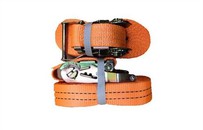Table legs are an essential component of a table, providing support and stability to the tabletop. They come in various shapes, sizes, and materials, with metal being a popular option due to its durability, strength, and sleek appearance. In this article, we will discuss how to produce table legs from a metal sheet using metal fabrication techniques.
Metal fabrication involves transforming metal sheets into a desired shape and size by cutting, bending, and joining them using various tools and equipment. Table legs can be produced using several metal fabrication techniques, including cutting, bending, welding, and polishing. Let's take a look at each of these processes in
Cutting: The first step in producing table legs is to cut the metal sheet into the desired size and shape. This can be done using different cutting tools, such as laser cutting machines, plasma cutters, or waterjet cutters. Laser cutting is a precise and fast method
Bending: After the metal sheet is cut into the desired size and shape, it needs to be bent into the shape of the table legs. This can be done using a press brake or a roll bender. A press brake is a machine that uses a punch and die to bend the metal sheet into the desired shape. Roll bending involves passing the metal sheet through a series of rollers to gradually bend it into the desired shape.
Welding: Once the metal sheet is bent into the shape of the table legs, it needs to be joined together using welding. Welding involves melting the metal at the joint and then allowing it to cool and solidify, creating a strong and durable bond. There are different types of welding techniques, such as TIG welding, MIG welding, and spot welding, depending on the thickness and type of metal being used.
Polishing: After the welding is done, the table legs need to be polished to remove any rough edges or imperfections. This can be done using a grinding machine or a polishing wheel. Grinding involves using an abrasive material to remove any excess metal and smooth out the surface. Polishing involves using a buffing wheel and polishing compound to create a smooth and shiny surface.
In conclusion, producing table legs from metal sheets involves several metal fabrication techniques, including cutting, bending, welding, and polishing. Each of these processes requires specialized tools and equipment and skilled workers to ensure that the final product is of high quality and meets the desired specifications. By using metal fabrication techniques, table legs can be produced in a cost-effective and efficient manner, while also ensuring durability and strength.
Hot Tags: table legs, China table legs manufacturers, suppliers, factory, Table Legs, Office Furniture Metal Parts, Filing Cabinets









